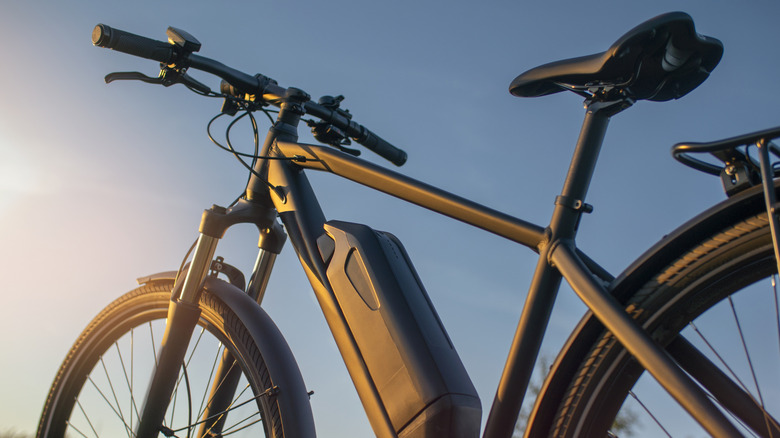E-Bikes Do Have A Legal Limit In California - Here's What You Should Know
While bike-riding still is a beloved pastime for many around the world, human-powered bikes have been joined by electric contemporaries in recent years. As anyone who spends any time in a populated area could tell you, E-bikes have grown immensely popular as of late.
There are now multiple major E-bike brands currently in business, and plenty of folks use them to get from point A to point B. With that said, just as the general public has bought in to the E-bike trend, governmental bodies have also taken an interest in this interesting form of transportation.
For example, lawmakers in California have taken a closer look at E-bikes, defining and setting a speed limit on them. Per the California Department of Motor Vehicles' Motorcycle Handbook, there are three types of E-bike: Class 1, Class 2, and Class 3. Class 1 is explained as bikes that have a maximum pedal-assisted speed of 20 mph, Class 2 consists of those that reach up to 20 mph with throttle assistance, and finally, Class 3 are pedal-assisted bikes with attached speedometers that reach a maximum of 28 mph.
All of them need to have electric motors that don't exceed 750 watts, and they're not allowed to go any faster than 30 mph. Digging deeper into California's laws regarding E-bikes, there's more to the state's regulations and classifications than a speed limit; there are other rules users have to adhere to.
Other California-specific E-bike rules
California lawmakers have taken a long look at E-bikes, coming up with other rules and definitions to keep riders safe. First are the rules that apply specifically to Class 3 E-bikes, given their significant speed increase over Class 1 and Class 2 models. Riders must be 16 years old or older, they have to wear a bicycle safety helmet, they're not allowed to transport passengers, and may only ride in a bicycle lane if authorized by local authority or ordinance.
State-wide, there are some strict rules when it comes to where you can ride E-bikes and similar modes of transportation. Expressways and freeways are off-limits with proper postings, and the same goes for bike paths or trails of any kind, unless they're beside a road, or if local law grants access.
On top of these far-reaching rules, there are also local laws to be aware of when riding. For example, the city of Torrance, California explains that E-bikes are subject to various rules that are in play for regular bikes as well, ranging from where bikes are allowed to be parked to how riders have to conduct themselves when using a crosswalk. Keeping up-to-date on more local rules is incredibly important, as different cities and counties could have different rules than those imposed by the state at large. Case in point, in Marin County, California, Class 2 riders must be 16 or older and all ages must wear helmets.
All in all, E-bikes are a fast, efficient means of getting around. As long as you're aware of the rules of the road — not riding one of the fastest E-bikes around in areas where they're considered too fast by law — odds are that you won't face any legal trouble in California or elsewhere.

